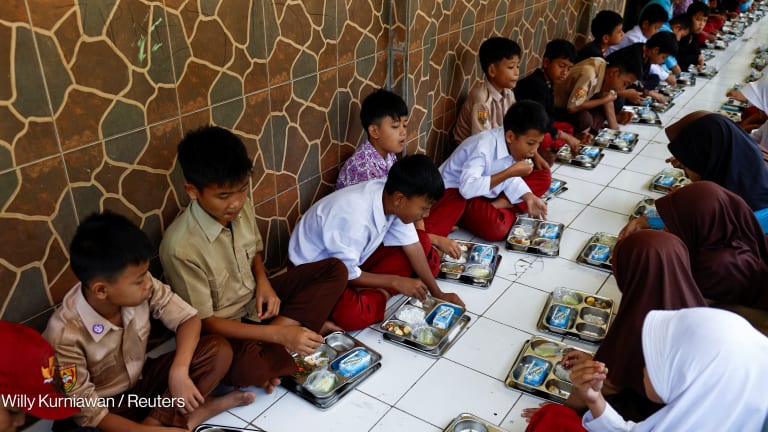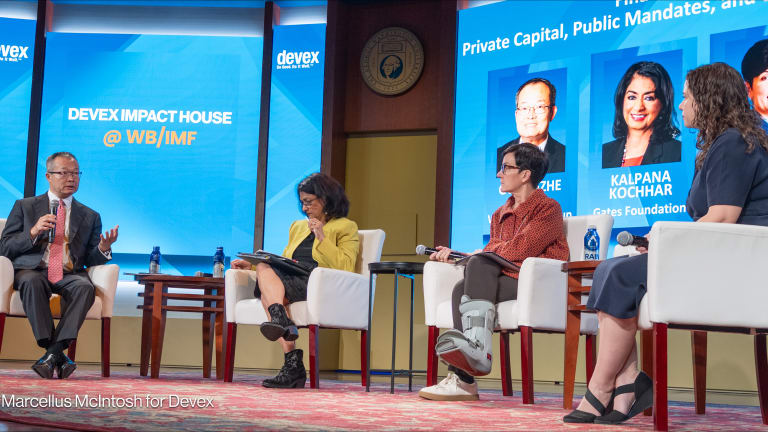
PARIS — Canada has been exploring and working on innovative financing methods for years, but with the feminist international assistance policy, a new development finance institution, new authorities for Global Affairs Canada, and some new funding, it will be doing even more work in the sector in the years ahead.
The Canadian government has been working with partners on innovative finance and blended finance, largely by testing through pilots, she said. But in 2015 and 2016, Canada underwent an international assistance review and that broad consultation led to the feminist international assistance policy, which embeds the need to use new financing mechanisms.
“It's both a what and how and in the back end of the policy, it really talks about the importance of us pursuing new partnerships, new approaches — including in relation to innovative financing for development,” said Elissa Golberg, assistant deputy minister for strategic policy at Global Affairs Canada.
“We've always interpreted that to include a spectrum of things: certainly domestic resource mobilization is part of that, we don't discount the role of ODA … it's going to depend on the country context and which piece we're going to use,” she said.
Canada's new foreign aid policy puts focus on women, rights
With no increase in the overall aid budget, turning commitments into action may be easier said than done, warn Canadian NGOs.
Domestic resource mobilization is about more than taxation though, she said, it’s about building local capacity. As an example, Canadian pension funds are working with developing country pension fund counterparts, she told Devex in Paris on the sidelines of an Organisation for Economic Co-operation and Development event about private finance for sustainable development.
In Canada’s 2018 budget, up to $1.5 billion was allocated for innovative financing development, some of that for sovereign loans, but the rest is for an international assistance innovation program that Global Affairs is working to get up and running now. Golberg said she couldn’t say much about the details of the new program yet, but that they were working to figure out how to use new authorities from the recent Budget Implementation Act — unconditional repayable contributions, guarantees, equity investments — and find ways to maximize the agency’s resources.
“There's no point in us doing the same thing that the DFI [development finance institution] does. So we want to make sure that we're finding our right space and designing the initiatives in a way that's going to add value,” she said.
With a Financing for Development Forum coming up in April, and a High-level Dialogue on Financing for Development at the U.N. General Assembly in September, along with G-7 and G-20 meetings, there will be many forums for discussing development finance in the year ahead.
“The key for 2019 is for us to sustain the momentum, for people not to be discouraged because they think somehow that we should be much further along than we are,” Golberg said, adding that it is important to acknowledge how much progress there has been since 2015.
There are more sectors involved and conversations happening now, for example with pension funds, that would not have happened several years ago, she said.
“So how do we maintain the momentum and how do we identify the concrete opportunities? How do we translate what is coming for a number of us in terms of new authorities so that it's going into the right kinds of initiatives? How do we learn from that? These are all things that we want to make sure that we do and take advantage of the meetings that will happen along the way to maintain the international profile on the importance of this issue as well,” Golberg said.
3 key development finance trends to watch
New questions and challenges about development finance were discussed at the OECD meetings this year.
This work will not be without its challenges, including fragmentation. With so many new initiatives and efforts, some consolidation is needed to ensure that there isn’t too much fragmentation. There also need to be more efforts to ensure that data and impact measurement efforts continue to progress so there are effective, comparable ways of evaluating programs and investments. Trying to figure out how to measure programs or investments and be public about results and decisions without giving up proprietary information is not easy to figure out, but transparency is critical, she said.
While Canada is exploring new tools, Golberg said that there is not yet “enough of a track record yet for us to be able to say with certainty that investing resources through these mechanisms will lead to a better development impact than if we would have used traditional grant and contribution arrangements.”
“Ultimately does this lead to a better development outcome for the poorest and most vulnerable than if we would have done it through traditional development cooperation. I mean that's very simple but that should be kind of what helps us to define the end game and then we'll determine which tool makes the most sense.” Golberg said.








